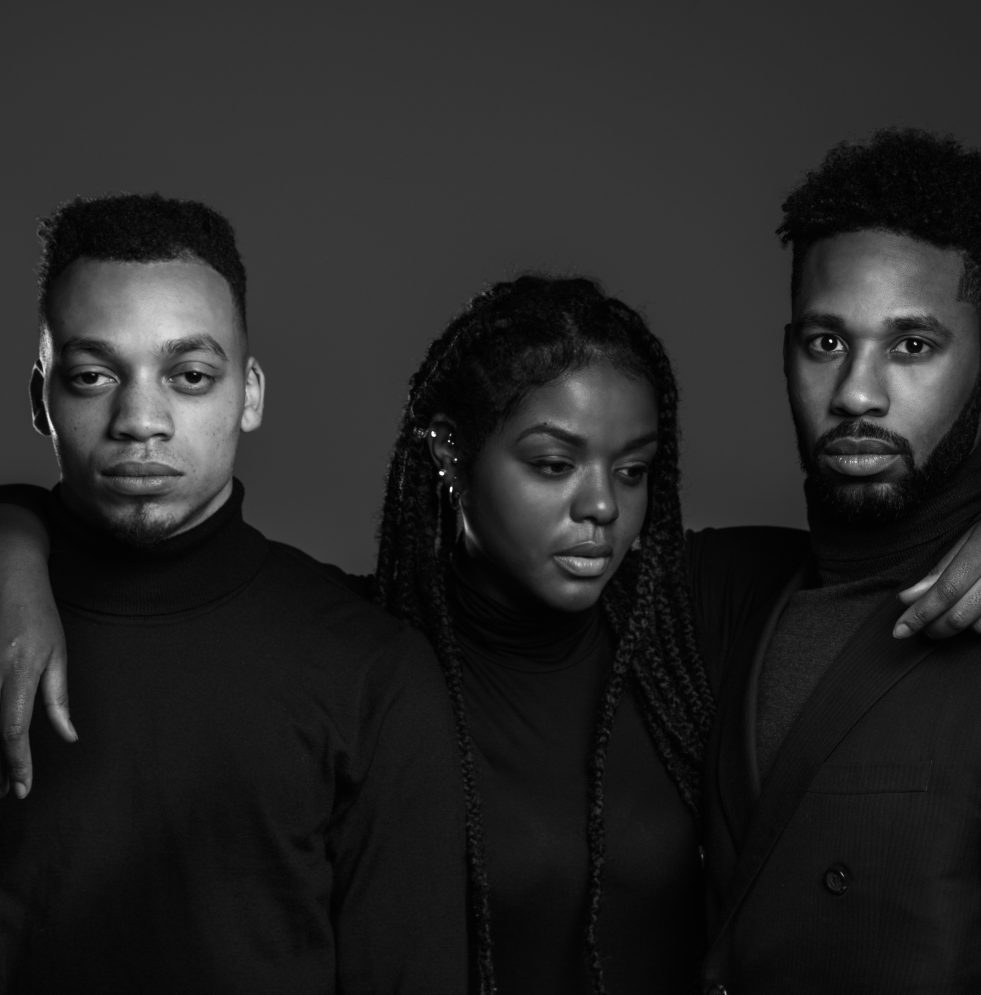Polyamory is often seen as the opposite of monogamy. Monogamy is a relationship structure or practice in which a person has one romantic relationship at a time, in some cases for life, where commitment to the relationship is demonstrated through exclusivity and the sacrifice of not seeking new partners for as long as the relationship lasts. Polyamorous relationships can be very different.
Polycules and Constellations
Most polyamorous relationships involve complex networks of interconnected partners called polycules, also known as constellations.
Polycules can be extremely diverse in size and structure. For example, they could be as simple as one person dating two people who are not involved with each other, or as complex as one person being married to one partner while being involved with two others, who are also involved with each other, who may also have other partners, and so on and so forth.
Different Polycule Shapes
There are also various terms for the less complex polycule shapes: one person dating two people is a V (and the partner in the middle is typically called the ‘hinge’ or the ‘pivot’), three people all dating each other is a triad or a throuple, four people being involved with each other is a quad (and if everyone is dating everyone, a ‘unicorn quad’), and chain-shaped polycules where one person is dating another who is dating another are often called N or Z relationships.
Kitchen Table Polyamory and Parallel Polyamory
Honesty, communication, and trust are the pillars of a healthy relationship, and they are especially important in polyamorous dynamics where multiple people’s feelings and needs must be considered with every decision and action.
Kitchen Table Polyamory
Some polyamorous relationships are very close-knit and family-like, where the people involved strive for closeness between themselves, their partners, and their metamours (the term for your partner’s partner who you are not personally involved with). Such dynamics are often referred to as practising ‘kitchen table polyamory’, so named because the parties are typically comfortable enough with each other to be able to sit around a kitchen table and have a good conversation.
Parallel Polyamory
Some polyamorous people choose to keep their relationships much more separate, with less focus on bringing multiple partners together for events or regular hangouts; these dynamics are referred to as practising ‘parallel polyamory’. Neither is better than the other: it all depends on the wants, needs and preferences of all parties involved.
What is an Open Relationship?
An open relationship is a type of non-monogamous relationship, where the parties involved are free to seek connections outside the relationship non-exclusively. The term is used to describe any non-monogamous relationship that is romantically and/or sexually open. However, it is most commonly used to refer to romantically closed but sexually open dynamics, making them distinct from polyamorous relationships, which are specifically both romantically and sexually open.
Polyamory And Open Relationships
Technically speaking, most polyamorous relationships are open relationships, as the parties in a polyamorous dynamic are free to seek multiple sexual or romantic partners as they choose, with a particular focus on romantic connection and intimacy. However, not all open relationships are polyamorous relationships, because many couples prefer to maintain one romantic bond while being open to seeking multiple sexual partners.
Polyfidelitous Dynamics
All monogamous relationships are by definition closed relationships, as the two parties in the relationship are exclusive to each other and agree not to seek new partners unless they are no longer together.
However, there are also closed polyamorous dynamics – groups of three or more people who agree not to seek further partners and remain exclusive to each other – also known as polyfidelitous dynamics. For example, one person dating two people who wishes to be exclusive to them would be a closed V, three people who are all dating each other exclusively would be a closed triad or a closed throuple, and four people in a closed exclusive dynamic would be referred to as a closed quad.
What is a Throuple?
A throuple, also known as a triad or sometimes a ‘threelationship’, is a polyamorous relationship involving three people, where each member is dating the other two. This term is a portmanteau of the words ‘three’ and ‘couple’.
To illustrate how such a dynamic works, let us suppose the parties in a throuple are A, B, and C. A throuple involves four relationships: A and B, B and C, C and A, and the group dynamic of A, B, and C. All four relationships must be nurtured for the throuple relationship to thrive.
Throuple Popularity In Media Vs. Real Life
While throuples are the most common type of polyamorous relationship seen in mainstream media depictions of polyamory (see You Me Her, Gossip Girl, or Trigonometry), they are actually vastly overrepresented in the media compared to in real life.
It is relatively rare for three people to all be attracted to each other at the same time, and relatively difficult for most people to sustain two simultaneous romantic relationships as well as maintain a group dynamic. This is because it can be challenging to balance all the dynamics in such close proximity and interdependence, which can create opportunities for the parties to experience jealousy, compete with one partner for the other person’s affection, and make direct comparisons between the relationships. More commonly, a person might date two people who become close friends due to their mutual connection with their shared partner, but are not romantically or sexually involved with each other.
Polygamous vs Polyamorous: The Difference
Polygamy is the practice of having more than one simultaneous spouse. Polyamory is typically confused with, but is distinct from polygamy (which shares the Greek root for ‘polus’ meaning ‘many’, but differs in the Greek root ‘gamos’ meaning ‘marriage’).
Polygamy: Polygyny And Polyandry
Typically, when people refer to polygamy, they are most commonly referring to polygyny, which is the practice of one person, usually a man, having multiple wives. There are also examples of polyandry (one person, usually a woman, having multiple husbands) in human history, but they are far less common.
In polygamy, usually the person who has multiple spouses is the only one given the freedom to do so; their spouses are expected to remain exclusive to them and not seek additional partners. However, there are also examples of group marriages where three or more people are married and all consider each other to be partners. Polygamy is outlawed in many parts of the world, including Europe, the UK and America, but is still practised today in parts of Africa, the Middle East, and Southeast Asia.
What is a polygamous relationship? What is a polyamorous relationship?
Polygamous dynamics are distinct from polyamorous dynamics in several ways.
Firstly, while polygamous dynamics typically involve multiple spouses being exclusive to one individual, polyamorous dynamics allow every person the freedom to have as many or as few partners as they choose. Polyamory entails multiple romantic relationships, but it does not specify anything in detail about these relationships. That is left to those within the polyamorous relationships to decide.
Secondly, polyamory is significantly less gendered than polygamy; polygamous dynamics usually involve multiple heterosexual relationships, whereas polyamorous dynamics can be comprised of people of a diverse range of sexualities and genders. Polyamorous people can be of all sexualities and genders.
Thirdly, polygamy specifically focuses on marriage, while polyamory focuses on love, intimacy, and connection between multiple people.

Leanne Yau (she/they), aka Poly Philia, is a polyamorous content creator, writer, and relationship educator with over 330,000 followers across Instagram, TikTok, Facebook, Twitter, and YouTube, where she creates and curates humorous and educational bite-size content on non-monogamy, queer relationships, and sex positivity.
Leanne has been actively non-monogamous since she was 17 years old, and her content draws from her own experiences as a Gen Z bisexual, neurodivergent, Chinese woman. As an influencer, she has worked with multiple sex toy brands including Lovehoney, Le Wand and We-Vibe, dating apps such as Feeld and #Open, and sexual wellness brands Lorals and LitApp. Leanne also runs the Happy Polydays podcast, created the #PolyamoryTipoftheDay series, and provides 1-1 non-monogamous peer support to individuals and couples across the globe.

